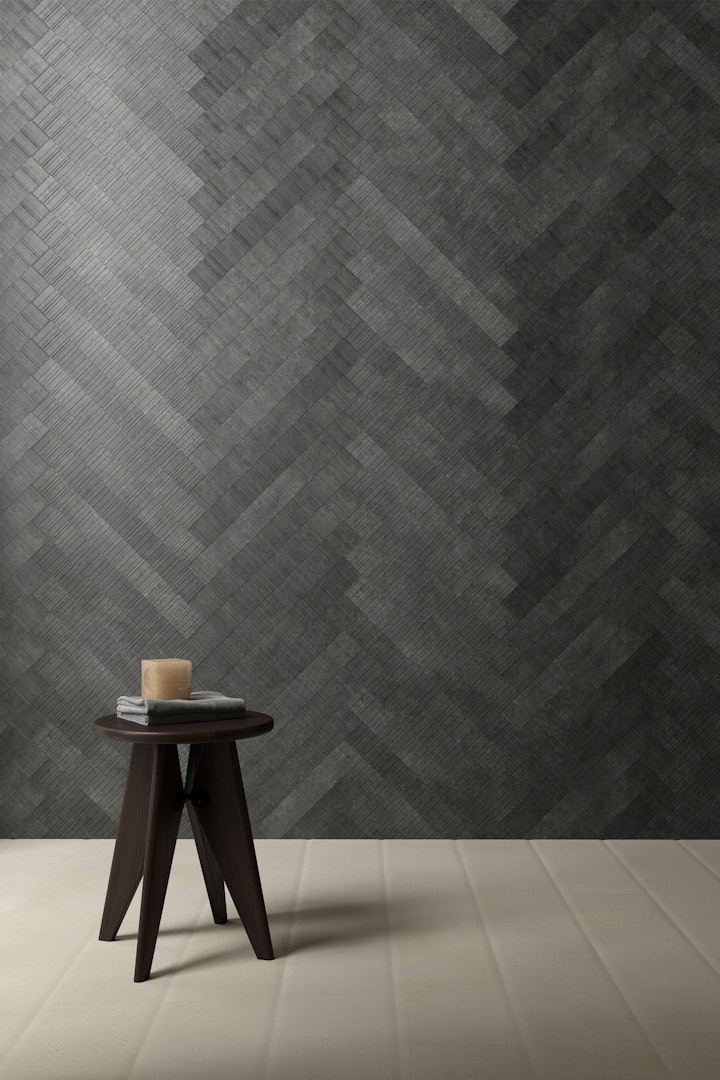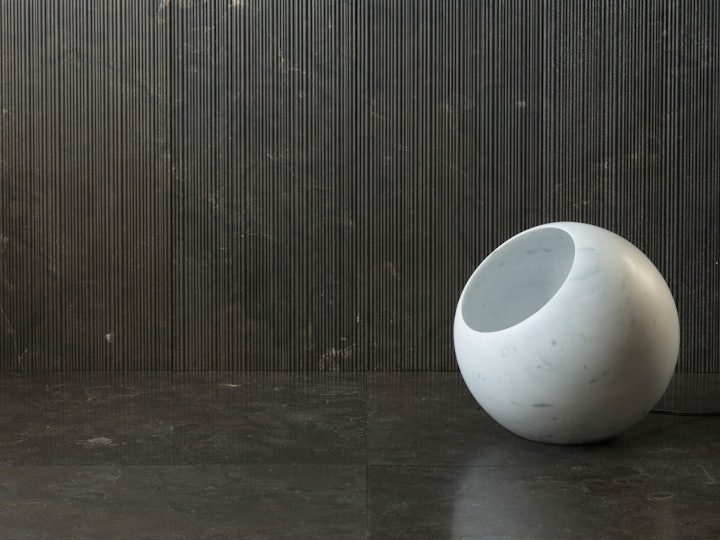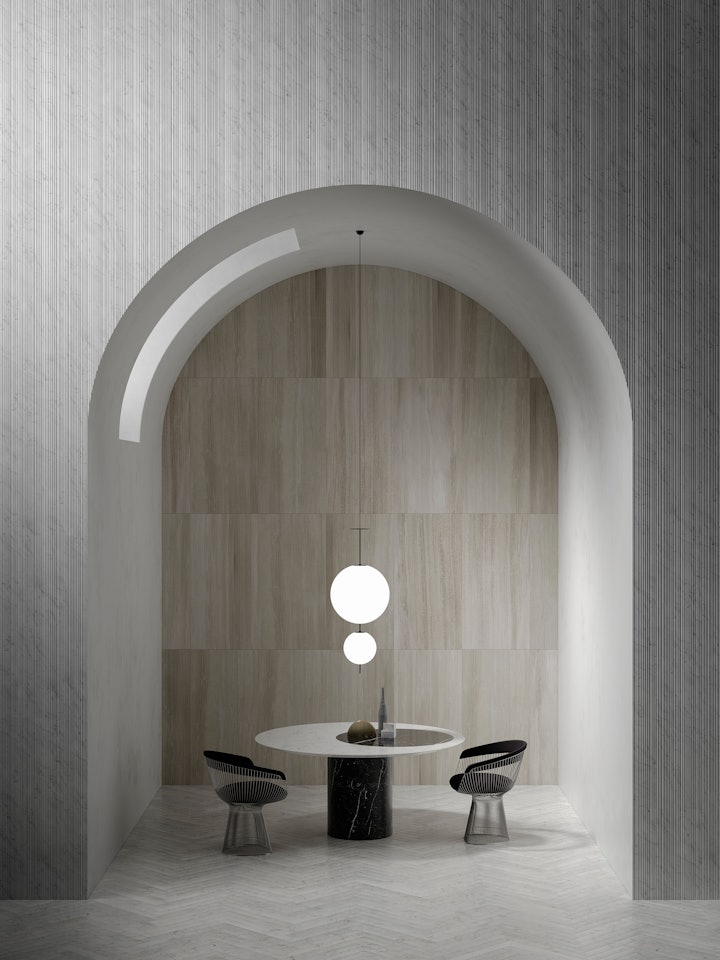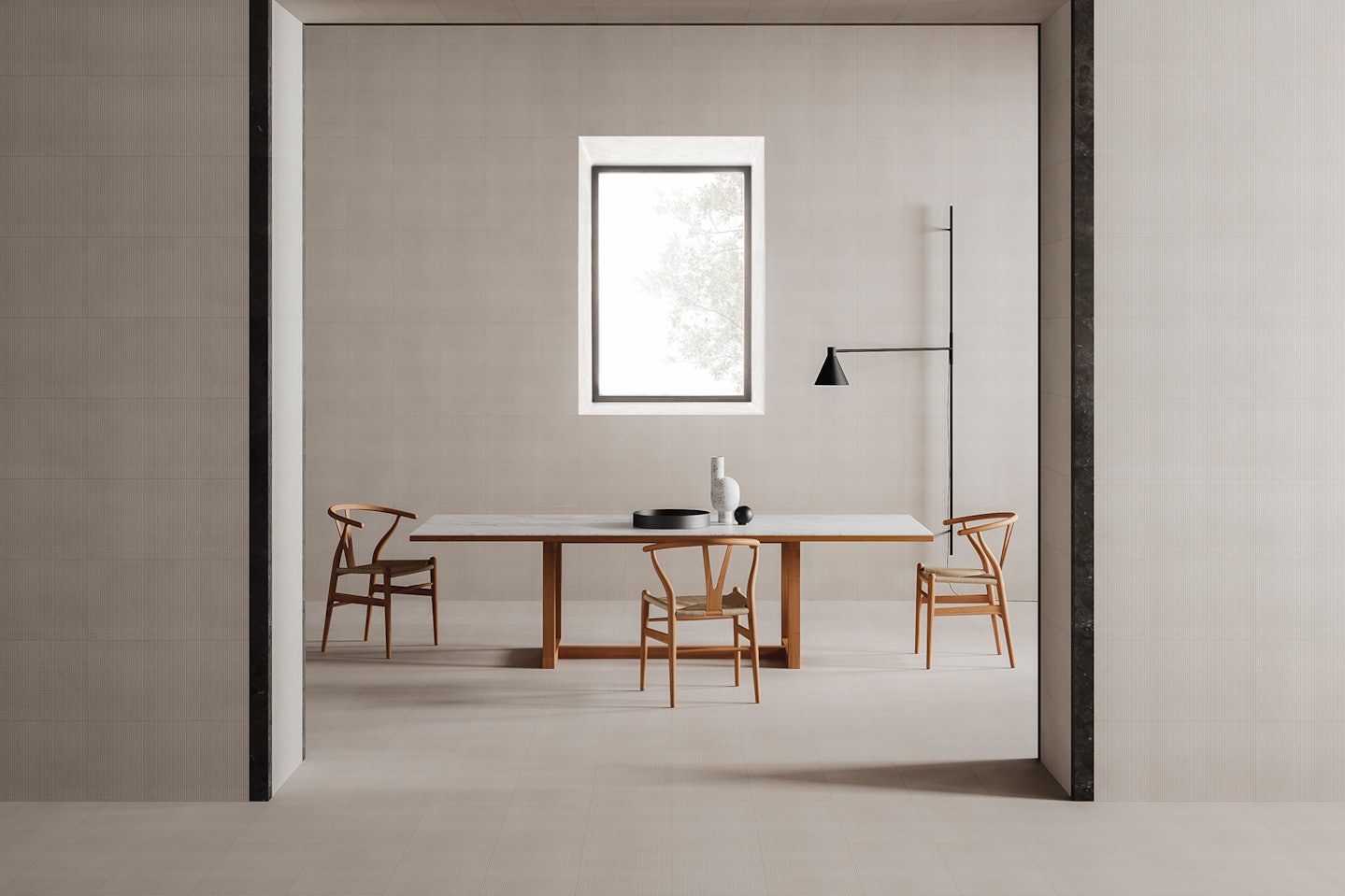The joy of simplicity
03.2022
But perhaps the best example of Salvatori’s drive for simplicity is an idea, first and foremost, rather than a design
Simplicity is the key to excellence, or so says the pioneering German industrial designer Dieter Rams.
In over three decades as chief design officer at Braun, Rams articulated the Modernist principles of simplicity and clarity through functional, practical designs for everything from record players to shelving systems, and he continues to have a huge influence on design today – seen not least in Jonny Ive, the man responsible for the pared-back aesthetic of the iPhone.
And yet, the struggle for simplicity goes back much further than the enduring ideas of 20th century
Modernism, as Rams himself says – “‘simple’ is incredibly hard to achieve: even da Vinci knew
this.”

Simplicity is central to Salvatori’s approach to design.
Natural stone, in its intricate, infinite variation – in the unique veining, colouring and patterning – is inherently expressive and demands to be treated with restraint. Taking inspiration from how stone is found in nature, we prefer discrete, matt finishes to the ostentatious, highly-polished effect that is all too often associated with natural stone.
Over time, we have developed new treatments and textures, subtly augmenting the natural aesthetic qualities of stone with pattern and depth. Understated and respectful of the raw materials, these textures still allow the stone’s unique voice to be heard while enabling new possibilities for design. Bamboo, for example – the first texture developed by CEO Gabriele Salvatori with his father, Alfredo – introduces a ridged finish, a linear rhythm that creates a sense of harmony, while Tatami reinterprets traditional Japanese mats to create a detailed, tactile, almost malleable surface.

It is the combination of technical expertise and sensitivity to design that defines Salvatori, and in recent years we have invited like-minded designers to share their own vision of simplicity in stone.
From Kengo Kuma’s Ishiburo texture – an apparently haphazard arrangement of stone batons that form an “angular harmony” – to Elisa Ossino Urano lamp – a hollow sphere carved from a block white Carrara marble – we have worked with some of the most important figures in the industry to interpret stone in new and exciting ways. This is particularly true of Ron Gilad’s playful Girella – a slab of marble curled to form a bench.
Created, in fact, by a specialised drilling process and a fortnight of careful detailing by hand, Girella is as complex to create as it is simple in its form.

But perhaps the best example of Salvatori’s drive for simplicity is an idea, first and foremost, rather than a design. Lithoverde, the first stone surface to use recycled 100% stone, has quickly become one of our most popular products. A simple idea – to find a use for the mountains of offcuts that would otherwise go to landfill – Lithoverde took years of research and development to be realised commercially. Since it launched, it has not only been recognised for its innovation and sustainability, but as a beautiful, unique surface – its randomly aligned stone panels appealing to the arch-Minimalist John Pawson, who used Lithoverde for his celebrated House of Stone project at the Salone del Mobile in 2010.
Though it may never be easy to achieve, like Rams, we know that the joy of simplicity is central to our excellence in stone.
